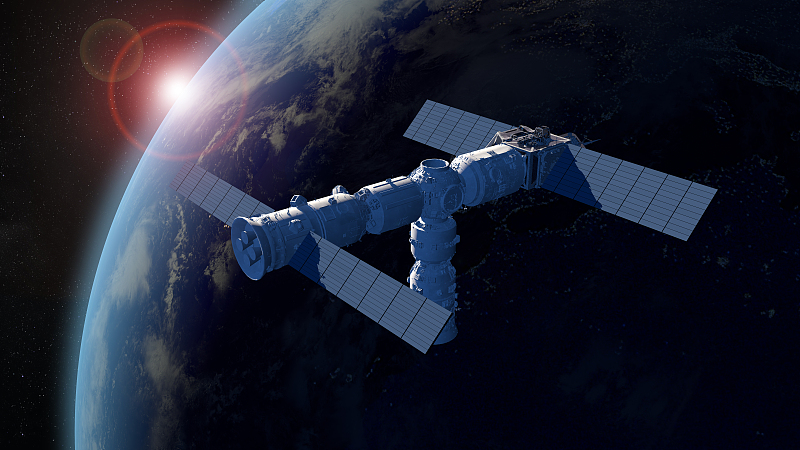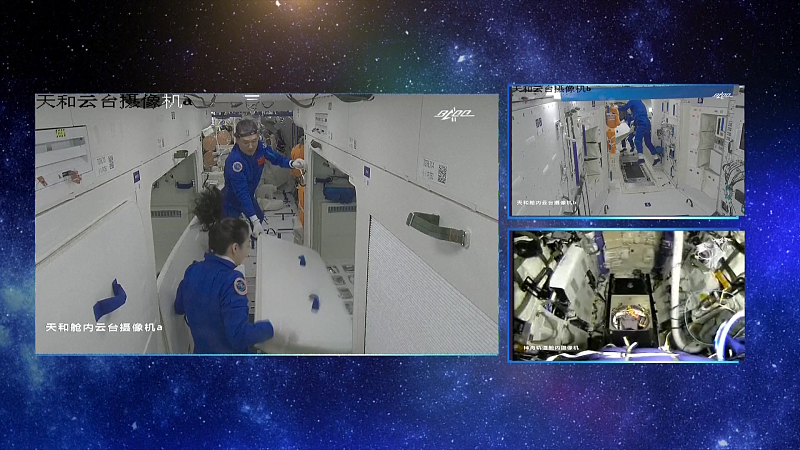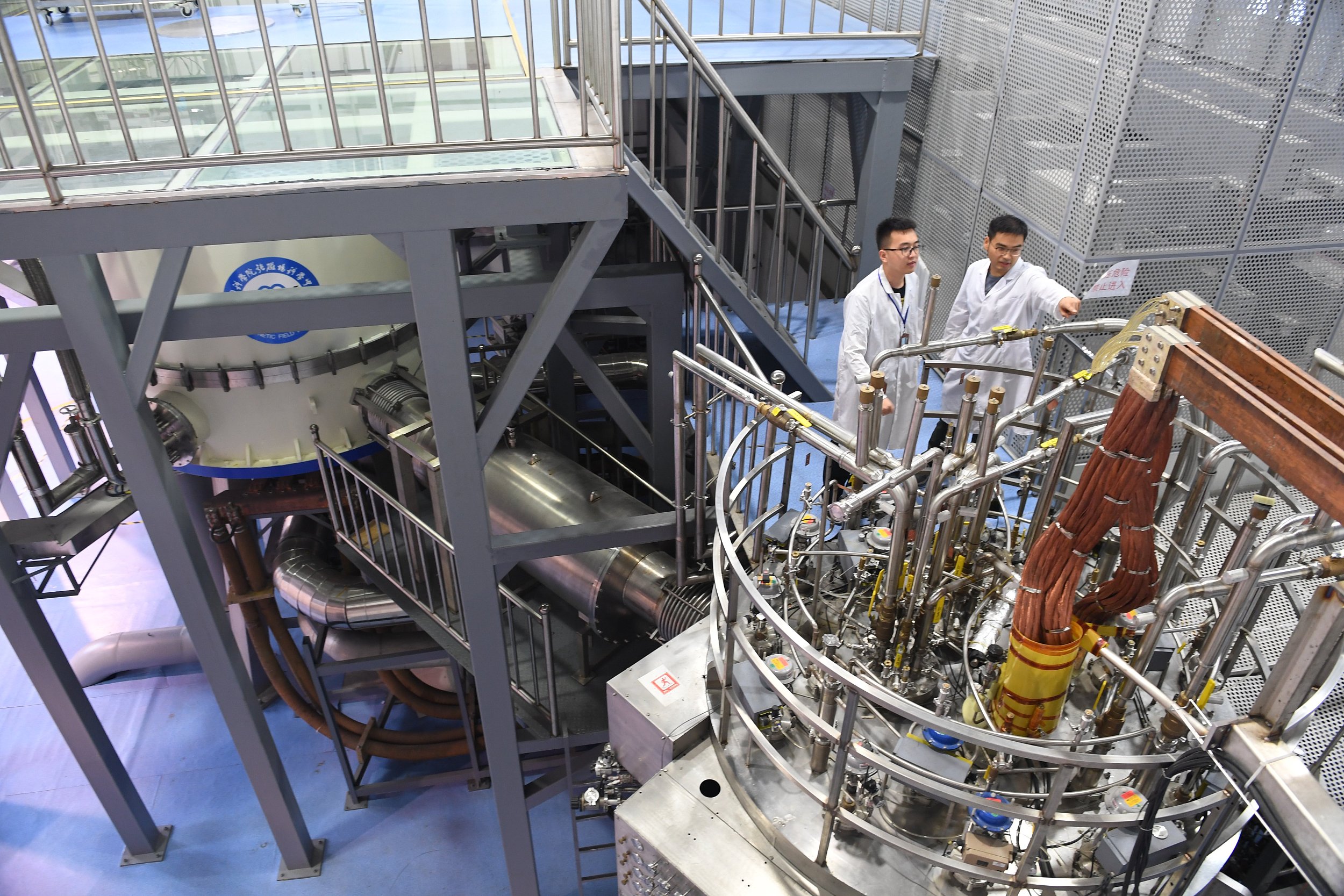Black Technologies Onboard CSS
By QI Liming
The Shenzhou-14 crew successfully entered CSS a couple of weeks ago. A feature of the current mission is the use of so-called "black technologies" onboard CSS.
Temperature Control Coats Protect Both Astronauts and Spacecraft Equipment

CSS in the extremely low temperature environment caused by the irradiation of the sun. (PHOTO: VCG)
The docking mode of Shenzhou-14 and the flying position of the space station assembly make the spacecraft continuously blocked by other modules, resulting in the spacecraft being in an extremely low temperature environment for a long time. The lowest temperature can reach below minus 100 ℃.
Conversely, when the space station is in certain configurations, parts of the spacecraft are constantly irradiated by the sun, and the highest temperature outside exceeds 100 ℃.
The extreme high and low temperature environment outside severely tests to the health of the astronauts and normal functioning of spacecraft equipment.
In view of this temperature control challenge, engineers designed and developed a "temperature control coat" that provides low absorption and low emission thermal control coating.
Low absorption means the coating itself has low solar absorption characteristics, which can effectively reduce the temperature rising due to solar irradiation.
Low emission means that the coating has a low infrared emittance, which can effectively block the radiative heat leakage from the interior of the spacecraft to the external cryoenvironment (below minus 100 ℃ environment), and avoid the continuous reduction of the temperature in the cabin.
At the same time, according to the ship structure, power and characteristics of space thermal environment, engineers designed specific absorption and emission properties.
"Temperature control coat" can ensure the cabin remains in the appropriate temperature range even in the long-term extreme high and low temperature environment.
Intelligent Administrator to Deal with Massive Data

Footages captured by the PTZ camera in Tianhe capsule. (PHOTO: VCG)
The Shenzhou-14 spacecraft and CSS generate a large amount of data all the time. In order to turn these complex parameters into intuitive values that astronauts can grasp, the application software of the instrument controller will act as an "intelligent administrator.”
When each subsystem of the spacecraft starts to operate, the data generated will be collected into the data management subsystem. Then the "intelligent administrator" will summarize the data, and convert it into content that astronauts can intuitively identify and operate, when displayed on the screen of the instrument controller.
Application software of the instrument controller uses unique graphics display technology, and displays the spacecraft trajectory, posture, flight status and information of each subsystem through text, graphics, and animation.
With the help of this unique graphic display technology, it get novel display effect of the instrument controller, and make the processing and display of the graphics and text from space intelligent instrument into reality, which provides a clear, intuitive, and comfortable display interface for astronauts to perform tasks.


